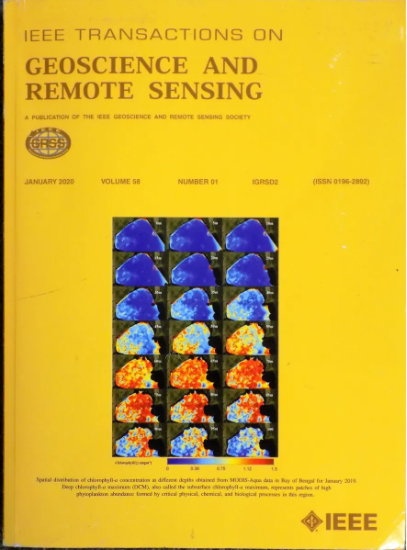Dual-Model Collaboration Consistency Semi-Supervised Learning for Few-Shot Lithology Interpretation
IF 7.5
1区 地球科学
Q1 ENGINEERING, ELECTRICAL & ELECTRONIC
IEEE Transactions on Geoscience and Remote Sensing
Pub Date : 2024-11-22
DOI:10.1109/TGRS.2024.3504571
引用次数: 0
Abstract
Geological environment remote sensing (GERS) interpretation contributes to lithological mapping, disaster prediction, soil erosion monitoring, and so on. However, the rich diversity, complex distribution, interclass similarities, and uncertainties in data quality of geological elements pose challenges to GERS interpretation. In addition, current automatic feature extraction of GERS elements, which rely on deep learning (DL) and remote sensing (RS) information process technologies, often require sufficient labeled data. Due to the enormous labor cost and specialized expertise needed, labeled GERS samples are limited to training the data-driven models. To tackle the above challenges, we introduce the semi-supervised dual-model progressive self-training (DM-ProST) framework. This framework employs two DL networks with different initializations as evaluator models to correct each other. A sample filtering strategy is then implemented to evaluate the quality of unlabeled samples, selecting high-quality and reliable ones to expand the training set. In addition, a fully connected conditional random field (CRF) module is incorporated to optimize DL network prediction maps, thereby enhancing the boundary performance of segmentation results. The framework utilizes a multitask loss function that combines consistency loss with cross-entropy, enabling the models to learn discriminative GERS features. This process accurately generates pseudo-labels and achieves precise lithology mapping of GERS with a small amount of annotation samples. Finally, we conducted an experimental evaluation on the Landsat 8 dataset in Xinjiang, China, and massive experiments proved the effectiveness of DM-ProST.用于少量岩性解释的双模型协作一致性半监督学习
地质环境遥感解译在岩性填图、灾害预测、水土流失监测等方面发挥着重要作用。然而,地质元素丰富的多样性、复杂的分布、类间的相似性以及数据质量的不确定性给GERS解释带来了挑战。此外,目前依赖于深度学习(DL)和遥感(RS)信息处理技术的GERS元素自动特征提取往往需要足够的标记数据。由于需要巨大的人工成本和专业知识,标记的GERS样本仅限于训练数据驱动的模型。为了解决上述挑战,我们引入了半监督双模型渐进式自我训练(DM-ProST)框架。该框架采用两个具有不同初始化的深度学习网络作为评估器模型来相互纠正。然后使用样本过滤策略来评估未标记样本的质量,选择高质量和可靠的样本来扩展训练集。此外,引入了全连接条件随机场(CRF)模块来优化深度学习网络预测图,从而提高了分割结果的边界性能。该框架利用多任务损失函数,将一致性损失与交叉熵相结合,使模型能够学习判别性的GERS特征。该过程精确地生成伪标签,用少量的标注样本实现GERS的精确岩性填图。最后,我们在中国新疆的Landsat 8数据集上进行了实验评估,大量实验证明了DM-ProST的有效性。
本文章由计算机程序翻译,如有差异,请以英文原文为准。
求助全文
约1分钟内获得全文
求助全文
来源期刊

IEEE Transactions on Geoscience and Remote Sensing
工程技术-地球化学与地球物理
CiteScore
11.50
自引率
28.00%
发文量
1912
审稿时长
4.0 months
期刊介绍:
IEEE Transactions on Geoscience and Remote Sensing (TGRS) is a monthly publication that focuses on the theory, concepts, and techniques of science and engineering as applied to sensing the land, oceans, atmosphere, and space; and the processing, interpretation, and dissemination of this information.
 求助内容:
求助内容: 应助结果提醒方式:
应助结果提醒方式:


